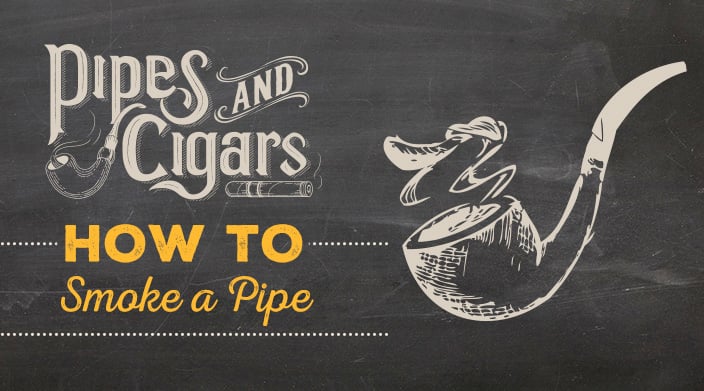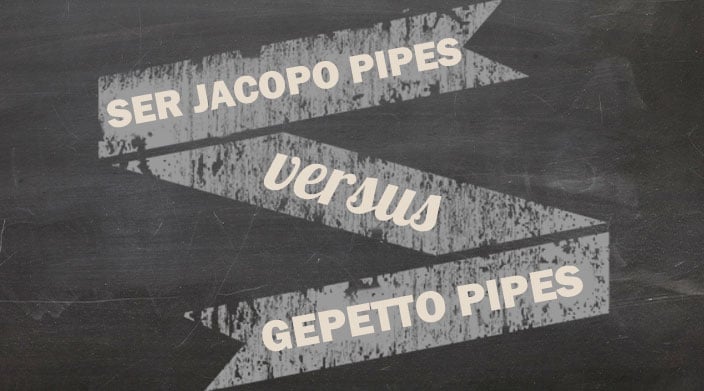Probably one of the first images that pop into one’s mind when thinking of a pipe smoker (other than Dad or Grandpa) is a man who didn’t really exist but who has fascinated millions worldwide for well over 100 years, and that man is the redoubtable Sherlock Holmes.
Holmes captured the minds of his fans because of the cerebral approach he used to solve a mystery. Using logic and science, he was able to see an entire scenario from a few seemingly unrelated clues. His creator, Sir Arthur Conan Doyle, had a knack for fleshing out his characters and making them seem real. One of the ways he did so was through the tobacco use of Holmes and Watson.
Although Watson certainly enjoyed his pipe (in which he usually smoked a blend called Arcadia Mixture, which had a fluffy, white ash, according to Holmes, or “Ship’s tobacco” at other times), he would occasionally join Holmes for a cigar, Watson never seemed to have picked up the cigarette habit. Holmes, on the other hand, never met a tobacco he didn’t like. In fact, tobacco played an important part in some of the stories. In the Adventure of the Golden Pince-Nez, Holmes “accidentally” drops cigarette ash on the bedroom floor of Professor Coram, in front of a wall, which he suspected was a doorway. When he left the room and then returned to find the ash disturbed, it confirmed that someone had been hiding behind the wall. Holmes referred to his monograph on tobacco and stated that he could identify over 140 different types based only on ash. Due to the widespread use of tobacco in England at the time, that knowledge would have been quite valuable. In one story, Holmes identifies an Indian Trichinopoly cigar without giving it much thought.
One thing that Holmes has in common with generations of pipe smokers is that he often combined a contemplative mood with bowl after bowl of tobacco. When faced with a particularly difficult case, Holmes informed Watson that he didn’t wish to be disturbed for the rest of the evening, as he intended to smoke and ruminate over the puzzle at hand. In doing so, he told Watson that he considered the case to be “quite a three-pipe problem”.
In contrast, when Holmes was agitated and fired with nervous energy, he frequently would pace and smoke cigarettes. In this, we once again realize that Conan Doyle completely understood smokers. Just as we can easily identify pipe smoking with quiet, calm, and introspection, we can also readily picture a fidgety person chain-smoking cigarettes. And when cigars were part of the scene, it was almost always a social setting (i.e.- after a meal at a restaurant…ah, for the good old days) with a libation such as a whiskey or brandy and soda. For anyone who has spent an hour or so with friends, a good drink, and a stogie, one can identify with those moments in time.
Probably in part due to his studies regarding the noble weed, Holmes was rather particular when it came to tobacco. He had his cigarettes made for him by a London tobacconist and kept them in a metal case. His taste in cigars was definitely higher end, with his preference being Cubans. His pipe tobacco was a common black shag. Shag tobacco in Victorian days was more coarsely cut than what we think of as a shag today, and it would have been a strong tobacco of fair to poor quality. Watson commented on how dense and foul the clouds of bluish smoke would be when he would return from a sojourn while Holmes would concentrate on a puzzle.
Holmes also must have, on occasion, used nasal snuff, as one of his prized possessions was a jeweled snuff-box that had been given to Holmes by a prominent client. The use of snuff isn’t often mentioned in the stories and novels, but it was a much more widespread practice during the 1800s than it is today.
If one were to look for an illustration of the term “creature of habit”, Holmes could be used as a prime example. Some of his quirkiest routines regarded his sense of organization. He kept his correspondence affixed to his mantelpiece by a pen knife, and in that same vicinity, you would find a Persian slipper (typically made of silk, satin, or brocade, with a curled-up toe), and this served as Holmes’ tobacco pouch. Cigars were relegated to the coal-scuttle. For those who aren’t familiar with the term, a coal-scuttle was made of metal and looked somewhat like a wide-open basket with a handle. It was kept by the fireplace and usually was filled with coal to stoke the hearth, kept with a shovel-like scoop. Since it was near the fire, it couldn’t have been good for the cigars, but, for whatever reason, it made perfect sense to Holmes.
Even though he took great care in his personal appearance, Holmes varied greatly in his care of possessions. Newspapers would be scattered around his living room and the table he did his chemical experiments on was usually quite messy. On the other hand, the books and journals that he had written were kept in perfect order.
Lastly, let’s look at Holmes and his pipes. According to the Canon (the 56 short stories and four novels written by Conan Doyle), Holmes only had three pipes- a blackened “disreputable” clay (which he liked to smoke when in a disputatious mood), an oily briar, and a cherrywood. By now, you’ve probably noticed a discrepancy here- no Calabash. The gourd Calabash is the pipe most identified with Holmes, with its deep bend, golden color with the whitish meerschaum bowl and chamber and black military stem, but this pipe was never mentioned in any of the stories. It became associated with Holmes because of an American actor named William Gillette (who built Gillette Castle in Connecticut) who chose it, firstly, because he wanted a pipe large enough that the audience could see it, and so his pipe wouldn’t block his face from the audience, and the smoke would also be out of his line of sight. The Calabash would have been impractical for Holmes to smoke outside of 221B Baker Street as it is a large and unwieldy pipe. As a bit of an inside joke, although Jeremy Brett, noted by many as the finest portrayer of Holmes, never smoked a Calabash in the British Granada TV series, but if you look on his mantel in some of the shows, you will see one lying on the shelf.
Calabash or no, there’s plenty for the smoker to be intrigued by in the Sherlock Holmes pantheon which took place in a simpler, more relaxed time when a pipe, cigar, or cigarette was commonly used to affect one’s mood. Sadly, in the excellent current-day version of Holmes’ adventures on the BBC, Benedict Cumberbatch (who plays Holmes in the series entitled “Sherlock”) has been forced to rely on nicotine patches for the purpose of political correctness. It may be effective but without much charm. After all, what is a silhouette of Holmes without a pipe in his mouth?




































